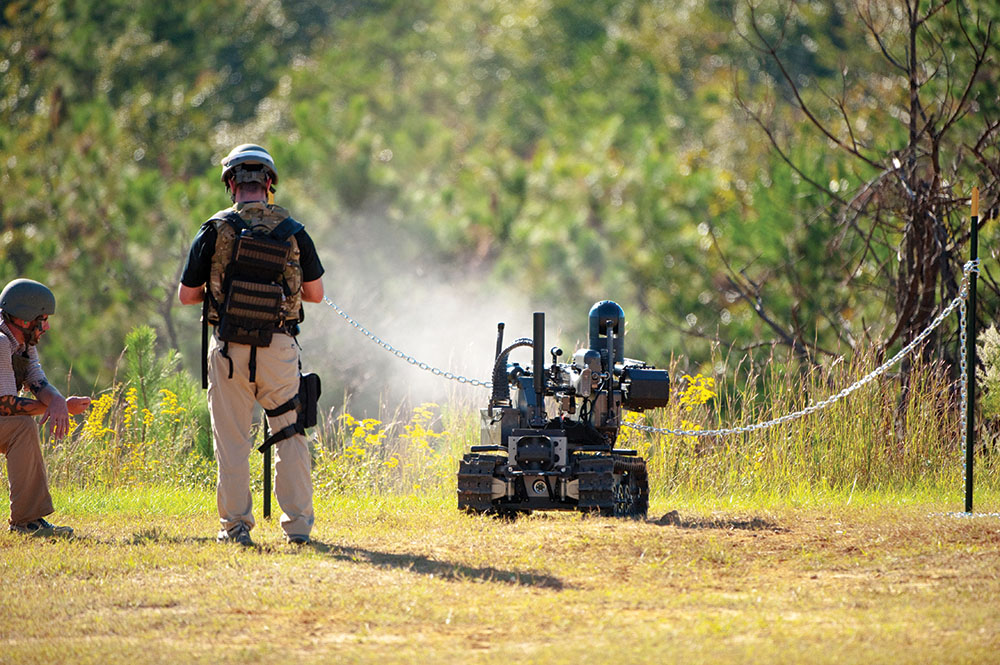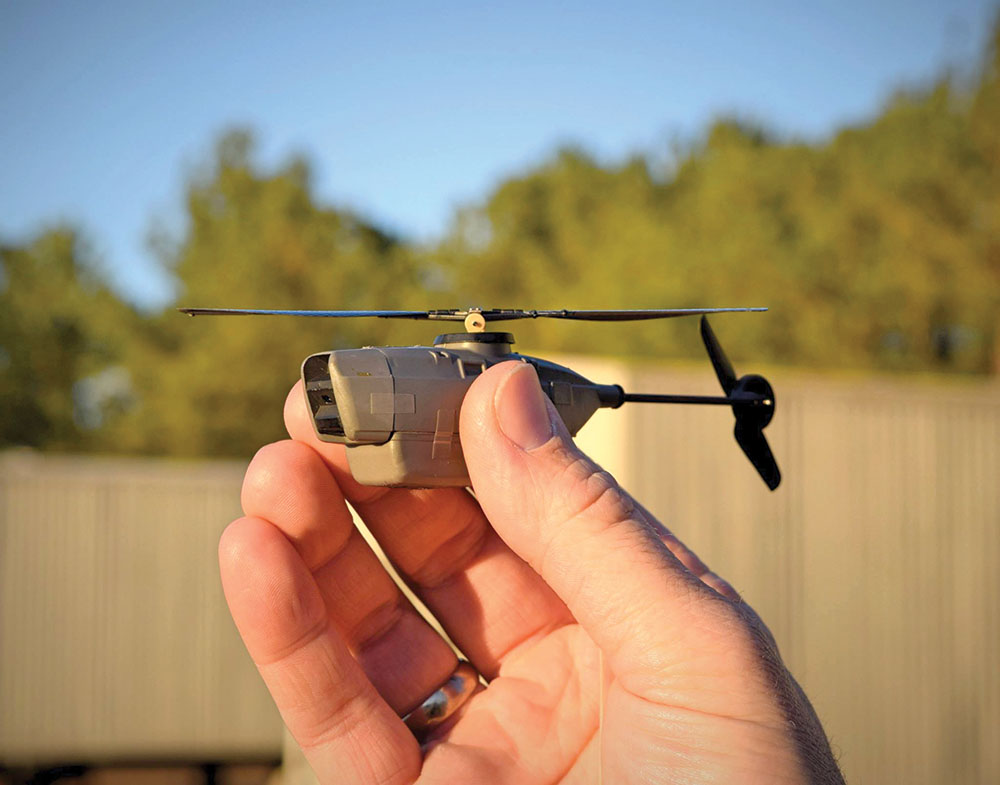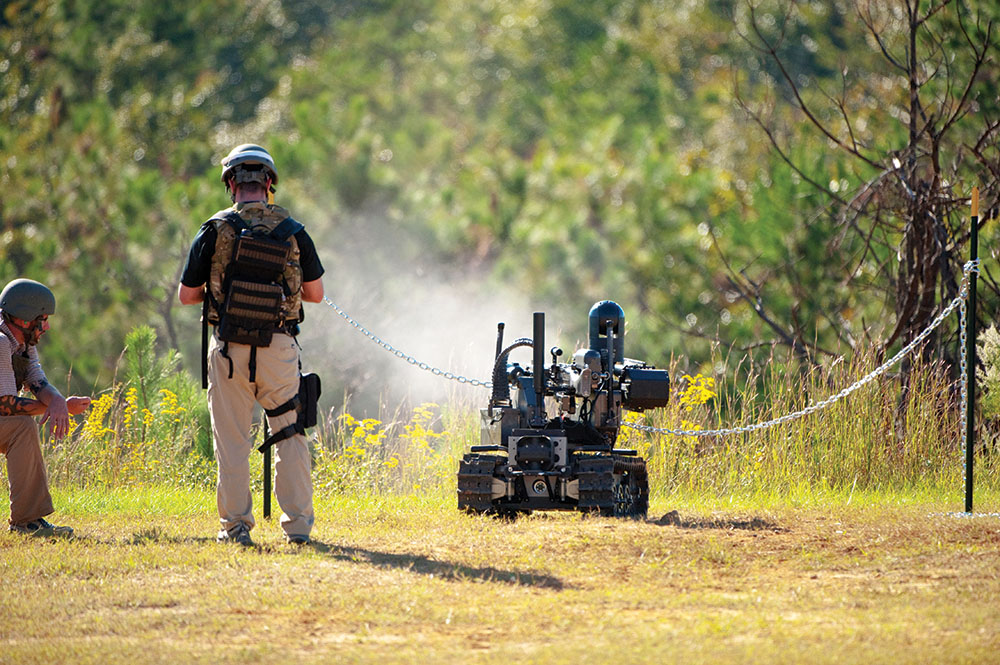
Better Buying Power emphasizes the value of prototyping capabilities to prove them out, and the annual TRADOC-sponsored Army Expeditionary Warrior Experiment is a model for the kind of venue that industry, organic developers and Soldiers need to come together to put capabilities through their paces and find the best solutions for the Soldier.
By Col. F. Wayne Brewster II
Rarely is an idea perfect the first time it is assessed. New technologies, training strategies and force redesign concepts need to be evaluated and improved. That’s why experimentation with prototypes is a critical tool for modernization and innovation for the Army.
The Army Operating Concept’s vision for Force 2025 and Beyond says the Army’s approach to modernization must be one that “synchronizes processes and products from concepts to capabilities to implement change.” Force 2025 and Beyond efforts produce recommendations that help Army leaders direct modernization and force-development efforts to prevent conflict and shape future security environments.
Force 2025 Maneuvers is the learning effort that provides the means to evaluate and validate expeditionary capabilities for the brigade combat team, retain overmatch and set conditions for fundamental changes to the Army beyond 2025. To accomplish objectives set by Force 2025 Maneuvers, the Army is conducting a series of war games, exercises, experiments and evaluations to determine Army force design and organization as well as integrated doctrine, organization, training, materiel, leadership and education, personnel and facilities solutions to enable the force to meet its mission in 2025 and beyond. The U.S. Army Training and Doctrine Command (TRADOC) has direct oversight for the implementation and management of Force 2025 Maneuvers efforts.
TRADOC uses prototype experimentations under the Force 2025 Maneuvers effort in a balanced mix of laboratory and operational environments combined with Soldier feedback. Prototype experimentation is essential to modernization because it allows leaders to make investment decisions that are better informed and in compliance with DOD directives.

THE PROMISE OF SCIENCE
A Soldier prepares to launch a prototype Soldier-borne sensor during AEWE 2015 at Fort Benning, Georgia. Experimenting with prototypes saves time and money, and offers more flexibility to explore the possibilities of technology. (Photo by Angie DePuydt, Maneuver Battle Lab)
The 2015 DOD implementing guidance for Better Buying Power (BBP) 3.0 recommends increasing prototype experimentation to explore novel operational concepts, supporting key elements of the industrial base and hedging against threat developments. The BBP guidance affirms that prototype experimentation reduces lead time to develop and field new capabilities.
EXPERIMENTING AND TESTING
Experimentation can identify shortcomings as well as desired capabilities; both are useful. Determining what not to pursue can be as helpful to capability and materiel developers as early successes. The annual Army Expeditionary Warrior Experiment, or AEWE, is a TRADOC-sponsored experimentation venue that brings government and industry together to solve Army problems in a joint, inter-organizational and multinational environment. TRADOC centers of excellence partner at AEWE and collaborate on learning objectives focused on the Soldier and small-unit level. Feedback gathered early in the development of a technology from experiments like AEWE can better inform industry’s internal research and development investments.
Experimentation augments mandatory testing, with a different nature and purpose. Although they share some aspects, such as involving Soldiers and an operational setting, prototype experiments differ from formal tests in several ways.
Whereas tests are typically mandated by law, policy or regulation, prototype experiments are a less formal tool that can provide decision-makers early insights before the program enters formal testing. Testing is critical to validate actual performance against established criteria. However, prior to formal tests, experimentation in a low-risk environment allows us to identify what today’s science may be able to accomplish in the future without the fear of failure. One such example of is Program Executive Officer (PEO) for Soldier’s Family of Weapon Sights – Individual (FWS-I) program.
When PEO Soldier began exploring an advanced night-vision sight, a prototype technology named the Night Reaper caught the attention of capability developers in 2009 during the AEWE at Fort Benning, GA. The Night Reaper prototype demonstrated the capability of a weapon-mounted thermal sight integrated with a helmet-mounted image intensifier. While there were some typical issues with the prototype, such as weight and power use, the capability the Night Reaper demonstrated was instrumental in shaping the requirement for the FWS-I.

REAPING THE REWARDS OF PROTOTYPES
A view through the FWS-I sight, which is based on Night Reaper technology that debuted as a prototype at the AEWE in 2009. It was renamed the FWS-I after prototyping and formal testing, and is the smallest, lightest thermal sight the Army has ever fielded. (Photo courtesy of PEO Soldier)
PEO Soldier, the U.S. Army Communication-Electronics Research, Development and Engineering Center’s Night Vision Lab and capability developers at the U.S. Army Maneuver Center of Excellence used the Soldier feedback gathered at AEWE to improve the capability in the lab and later ran a series of user tests to validate the sight’s requirements. Today, the FWS-I is the smallest, lightest thermal sight the Army has ever developed. Seeing the capability demonstrated by prototype technologies often helps us understand the art of the possible and the reality of existing science.
Experimentation serves a role in all Force 2025 time horizons. Some government and industry materiel solutions require little development and can influence the Army in the near term. At the same time, the Army must look further into the future and examine what may be possible for far-term capabilities that are not “shovel ready” now. Experimentation provides the Army an opportunity to modify portfolios and guide industry’s internal research and development initiatives. It can assist in cost-benefit decisions and reduce risk for acquisition program milestone decisions.
A COLLABORATIVE EFFORT
Another example of the value of experimentation to enhance innovative modernization is the ongoing exploration of how robotics can enhance the capabilities of warfighters and small units through manned-unmanned teaming (MUM-T). Robotics shows promise in several areas, including increased flexibility and freedom of maneuver, lethality, situational awareness and resupply, while reducing Soldiers’ exposure to threats. Experimentation on MUM-T includes collaboration from a variety of stakeholders, including government science and technology partners, capability developers, doctrine writers and industry.
The Marine Warfighting Lab, the U.S. Army Research, Development and Engineering Command labs and TRADOC battle labs encourage collaboration and nonattribution learning environments where there is no such thing as “failure.” In this type of atmosphere, a “test, fix, test” methodology is used to solve problems. Learning that something does not work is just as important as discovering something that does.
CONCLUSION
In the future, the Army must seize opportunities to modernize with efficiency, agility and accuracy in order to demonstrate stewardship of valuable resources, proactively innovate and deliver those capabilities needed to maintain overmatch. Prototype experimentation provides a means for leaders to make timely, informed decisions before committing time, money and manpower to programs.
The Army must maximize its modernization investments by using prototype experimentation to yield innovative outcomes and accelerate the development of our desired capabilities. Experimentation is true discovery learning that pushes the boundaries of what is possible today and shows us the promise of tomorrow.

PARTNERING TO PROTOTYPE
Soldiers and civilians participate in the armed unmanned ground vehicle demonstration at Fort Benning, Georgia, in 2013. AEWE brings together prototype developers and government and industry players to preview and test prototypes of new capabilities, some of which will go into formal testing and development and end up in the hands of Soldiers. (Photo by Patrick A. Albright, Maneuver Center of Excellence Public Affairs Office)
For more information, go to http://www.benning.army.mil/mcoe/cdid/AEWE/ or follow Army Expeditionary Warrior Experiments on Facebook.
COL. F. WAYNE BREWSTER II is director of the U.S. Army Maneuver Battle Lab, Fort Benning, Georgia. He holds an M.A. in military history from Louisiana State University, an M.A. in strategic studies from the U.S. Army War College and a B.S. from the U.S. Military Academy at West Point.
This article was originally published in the October – December 2015 issue of Army AL&T magazine.
Subscribe to Army AL&T News, the premier online news source for the Acquisition, Logistics, and Technology (AL&T) Workforce. ![]() Subscribe
Subscribe







